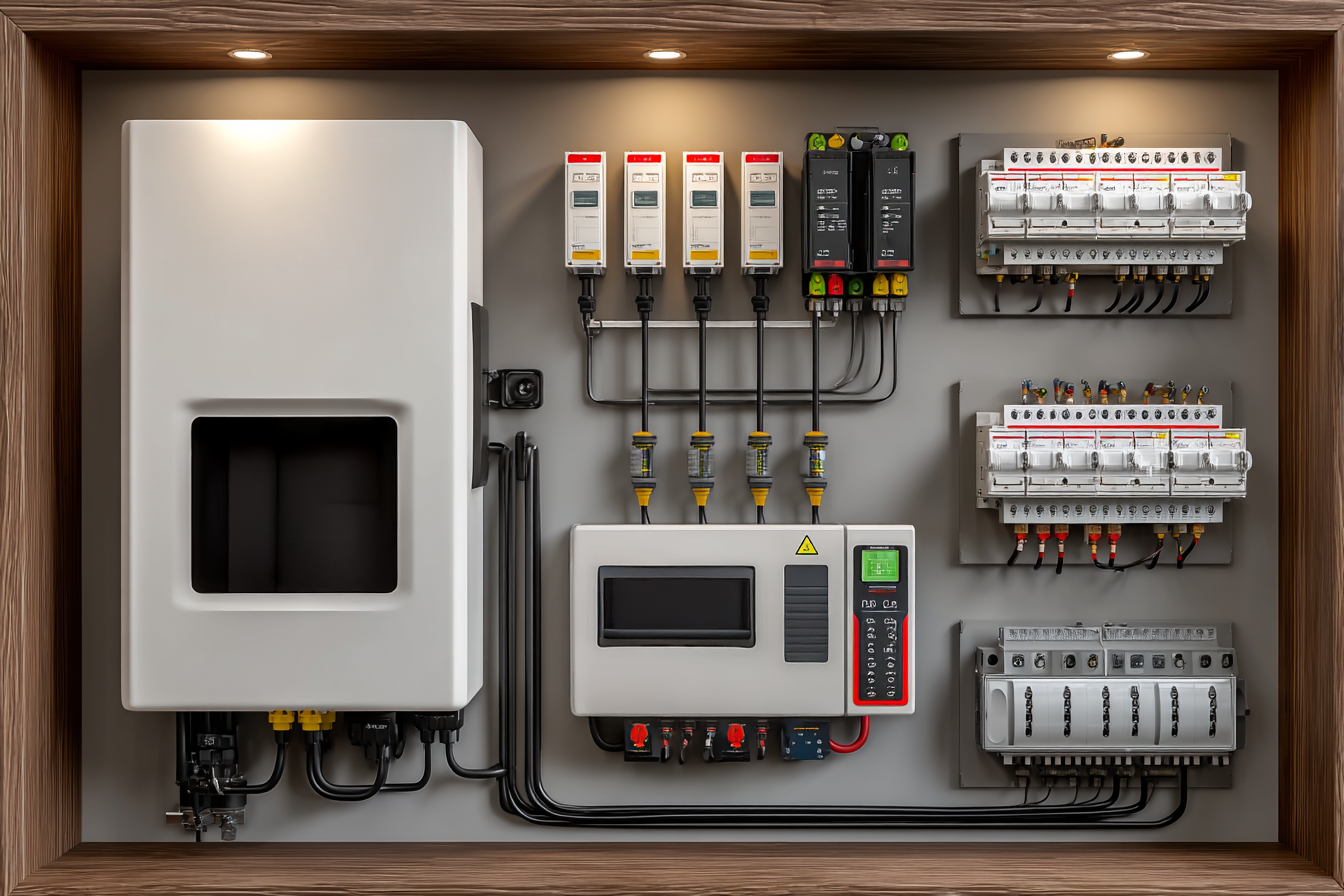The Ins and Outs of Firmware and Smart Inverters in Canadian Solar Systems

Written by Solenery
2 min read
Introduction
If you’ve been researching solar panels for your Canadian home, you’ve likely heard terms like “smart inverter” or “firmware updates” thrown around.
But what do they actually mean — and why should you care?
Inverters are the brains of your solar setup, and today’s models are getting smarter by the year.
From grid compliance to performance optimization and remote updates, inverters are no longer just hardware — they’re software-powered devices.
In this article, we’ll break down how firmware and smart inverters work, why they matter in Canada, and what to look for when choosing one.
What Is Inverter Firmware?
Firmware is the built-in software that controls how your inverter operates — like the operating system on your phone, but for solar energy.
What it controls:
When and how your inverter exports energy to the grid.
How it reacts to power surges or outages.
How much voltage it allows backflow from the grid.
Communications with utilities or battery systems.
Why this matters in Canada:
Canadian utilities (like Hydro One or BC Hydro) may require firmware that meets CSA standards or complies with new grid-interactive features.
Outdated firmware could cause delays or disqualification from certain net metering programs.
Bonus:
Many inverters now receive automatic firmware updates via Wi-Fi or Ethernet — meaning improved performance over time without technician visits.
What Is a Smart Inverter?
A smart inverter is a solar inverter that can:
Communicate with the grid.
Adjust power output in real-time.
Prioritize home loads vs. grid exports.
Work with smart panels or batteries.
Smart features include:
| Feature | Benefit |
|---|---|
| Volt-VAR control | Smooths grid voltage in areas with high solar penetration |
| Remote disconnect | Utility can safely isolate your system during maintenance |
| Power factor correction | Prevents electrical “noise” in grid circuits |
| Islanding protection | Automatically shuts down during power outages for safety |
In Canada:
These features are becoming required in many provinces — including Ontario’s ESA rules and CSA C22.2 No. 107.1-16 compliance for grid-tied systems.
Firmware Updates: Why They Matter for Canadian Solar Homes
Just like your smartphone, inverters get smarter over time.
Manufacturers like Enphase, SolarEdge, and Fronius routinely push software updates.
What firmware updates can do:
Fix bugs (like false fault alerts).
Improve grid compliance (especially if standards change).
Add new features (e.g., better battery charging logic).
Optimize performance under Canadian weather conditions.
Example:
A homeowner in Calgary with a SolarEdge inverter had an update that enabled time-of-use charging, allowing the system to prioritize self-consumption during peak rate periods.
Choosing the Right Inverter for Your Home
Here’s what to ask when selecting an inverter with smart capabilities:
Is it certified for Canadian grid standards?
Look for CSA, UL 1741 SA, or Rule 21 equivalency.
Does it support remote firmware updates?
Not all inverters can be updated remotely — which may require on-site servicing.
Can it integrate with batteries or smart panels later?
If you’re planning to add Tesla Powerwall, Enphase IQ Battery, or smart energy controls, your inverter must be compatible.
Does it support “grid services”?
Some utilities now offer incentives for inverters that can respond to grid signals. This is the future of demand-response programs in Canada.
Top Smart Inverter Brands in Canada (2025)
| Brand | Key Smart Features | Ideal For |
|---|---|---|
| Enphase IQ8+ | Microinverter with grid-agnostic mode | Homes with partial shade or batteries |
| SolarEdge HD-Wave | Module-level monitoring, battery-ready | Larger residential rooftops |
| Fronius GEN24 | Hybrid inverter, fast firmware updates | Solar + battery setups |
| SMA Sunny Boy | Utility-compliant firmware, Wi-Fi | Grid-tied systems without batteries |
Conclusion
Inverter firmware and smart capabilities aren’t just techy add-ons — they’re essential for maximizing your solar investment and staying compatible with evolving Canadian energy rules.
By understanding what your inverter does (and can do with updates), you’ll be better equipped to future-proof your home and save more in the long run.